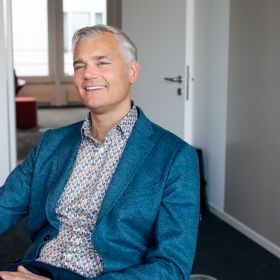“It was a case of getting focused on what we could do, and then instilling a sense of pride.”
Interview with Marissa Mayer, CEO of Yahoo
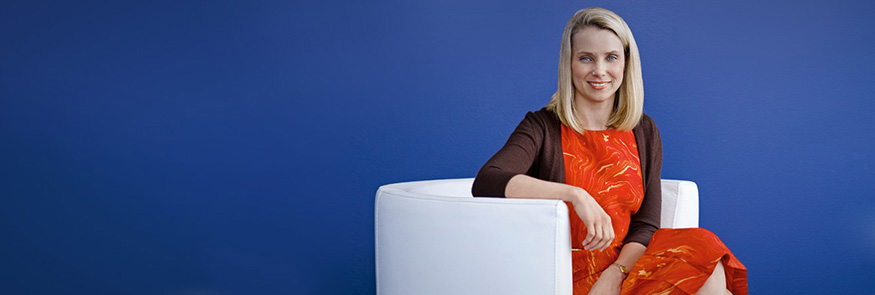
In 2012, when Marissa Mayer was appointed as Yahoo’s seventh CEO in just five years, the giant American multinational technology company was in serious trouble. A computer scientist specializing in artificial intelligence, Mayer had risen through the ranks of Google, a company she had joined back in 1999, before moving to Yahoo as the youngest woman ever to lead a Fortune 500 company. Talking to THE FOCUS, the Yahoo CEO describes how she has set about renewing this giant of the hyper-connected world.
THE FOCUS: When you arrived at Yahoo in 2012, your ambition was to return an iconic company to greatness. What elements of its former greatness were still there, and what did you have to add in?
Marissa Mayer: There were elements of greatness across the board, but each of them needed to be amplified. I deeply believe in the loop whereby you hire the right people, those people build great products, users of the Internet respond to those products, this brings you traffic, and your revenue scales with that traffic. Then you take the resultant earnings and reinvest in people. It’s a virtuous cycle that we’ve seen again and again across the industry. So there were great people here, but not enough of them. And there were great products here, but not enough of them.
But you still had foundations to build on?
Yes, there was a lot of traffic and large numbers of users for whom Yahoo was still a key part of their daily lives, but we wanted to strengthen our presence in people’s lives. We’re one of the three Internet companies in the US that report more than one billion users each month, which means that at some point in time, every third person in the world with Internet access uses Yahoo. So the obvious way to grow was to start producing products that are even more relevant to our users, so that they spend more time with us.
How much creative destruction did it take to refresh your products?
When we went through the product line for Yahoo, we found there were some parts that hadn’t been touched since 2001. So they had been around for more than a decade – which is ancient history in Internet terms. We had products that were still using the same code and the same design as they did 14 years ago. So we had to update our interface. When we originally designed and developed our interface it was cutting edge. But the world had moved on and we really needed to fix that. Which we’ve done. And then it was about growing traffic. Part of that was obviously making the shift to mobile. Another part of it was increasing the attractiveness and usefulness of our products – which we’ve done. The revenue lines from mobile, video, native, and social have grown significantly, from essentially zero in 2011 to a billion-dollar business today. When you’ve got US $ 5 billion in revenue, you need to build something big enough – and growing fast enough – to really matter. And that’s what our businesses in mobile, video, native, and social have delivered. It’s been quite amazing to see the company pull together behind this direction and strategy.
What about Yahoo as a company, as an employer? What did the internal process of change that you embarked upon look like?
The first thing we needed to do was change the culture, and culture is hard to change. But we needed to make Yahoo a place where I, as the chief executive, would be excited to work, and where the people who were already here would be more excited to work. Sure, I was thrilled and honored to be a part of Yahoo’s tradition but I’d never thrived in a world with high cubicle walls, so I wanted to make the culture more relational. It was about making people who were already here feel more valued, and making the people we wanted to recruit want to come and be part of our story. Being a profitable company, we have the luxury of being able to invest and so we’re able to say to people:
“You don’t need to choose between the perks somewhere else and here at Yahoo because we’re going to give you perks.” And so one of the early things we did was make the food free.
And how did people respond to that?
One reaction that I noticed was surprise. Many people came up to me afterwards and said: “Wow, but we didn’t earn that.” And I thought: “Seriously?” There had been a lot of start-ups that hadn’t been profitable but where the food was free. I thought it was the least we could do. It was about making sure that we honored the people who had stuck with the company through thick and thin, while also
making it a more attractive environment for others to join.
You took over a company that was going through a period of turbulence – how did you instill a sense of confidence in the future, despite groundbreaking changes?
I think leadership is about listening, so I spent my first few weeks doing just that. Listening. I would literally sit in the cafeteria for two hours a day and talk to anyone willing to talk to me. And from these conversations I got a really keen sense of what mattered to people; what was working well and what wasn’t working well. I decided then that it’s best to just put the turbulence aside, because when traumatic things happen – be it personally or professionally – it’s often hard to talk about them in the moment. So for me it was more a case of setting the turmoil aside, getting focused on what we could do and what, in fact, was going right, and then trying to instill a sense of pride.
“Working here at Yahoo has been the biggest and most interesting design problem of my life.”
Pride is a highly subjective emotion. How do you set about building a sense of pride in a large body of employees?
One of the things that make people proud to work somewhere is having insights into how decisions are made. But here at Yahoo there was complete mystification around how and why the board had reached some of its management decisions. So we decided to open up a weekly forum to update our people, which we called FYI, as in For Your Information – as well as For Yahoo’s Information. It was a way of saying: “Look, we’re going to give you a preview of everything that’s coming up and we’re also going to take questions from anyone who wants to ask them.” So this enabled us to start demystifying the thinking of various leaders across the company, myself included. What were our thoughts on new spaces for the company to move into – be it in the product line or in terms of actual physical spaces? Why did the menus in the cafeteria change? Who are the new hires? There were all kinds of different elements, big and small, that came up and through this process we really found a new cadence where we could maybe redact some of the financial information but, as a company, still be as transparent as possible. We even took it one step further and allowed people to file their own highlights and lowlights, and then vote them up or down. On the one hand this was a terrific governance process and on the other the board members themselves loved it because they felt they were now part of the same conversation as I’d been having in the cafeteria. It’s almost always the case that if the board talks to employees directly they will find out what is going well and what isn’t. Letting that dialogue happen really gave people a great sense that management trusted them; that the board trusted them. It helped build a sense of pride in what the company was doing. And once we started getting that momentum going on – transparency, pride, trust – it made it easier to move away from the turbulence of the past.
You held many prominent positions at Google, but you were never CEO before joining Yahoo. Have you changed as a person since you stepped into this role?
I don’t think so. Some people criticize me for claiming not to be ambitious, or not being ambitious enough, because I often say I didn’t set out to become CEO. I’d never said to myself “this is the role I want.” I just wanted to make a big difference. And during my time at Google I got to see how having great search technology was impacting on the far regions of the earth and helping change the world. Once you’ve been bitten by that bug, you want to make that kind of positive difference for users and for employees everywhere you can. I wouldn’t want to be CEO just anywhere, but this role in particular appealed to me because it was everything I’d ever done in a whole new context. It was mail, it was search, it was maps, it was news, it was mobile, it was social, it was all these things that I had worked on, but in a new context. So it was a big learning experience for me, but it was exactly the right role given my own experience. It presented me with a great opportunity to have a positive impact not only on the people at Yahoo, but also on our platform, to reach out to users and explore the full potential of mobile and its new formats.
“One of the things that make people proud to work somewhere is having insights into how decisions are made.”
At Google you made a name for yourself by determining how products would look and work. And when you arrived at Yahoo you hired one thousand mobile engineers and over 60 world-class computer science PhDs. You also began Yahoo’s suite of apps, including the Apple design award-winning Weather app, the News Digest app and, most crucially, Yahoo Mail which now has 225 million users each month …
I love design, and working here at Yahoo has been the biggest and most interesting design problem of my life. Everything from my designing the logo to designing the spaces, to designing our hiring policies and practices, to designing the product line and designing revenue strategies – everywhere you look, there’s another design problem where you could say: “Okay, what are the challenges and how do we fix them?” And that’s hugely appealing to me, to work on such an incredibly large multi-faceted design problem.
Compared to other Silicon Valley giants, what are the qualities that make Yahoo special and unique?
A couple of things: The first is that going back to the earliest days in 1994 we were always the guide. That’s when we were known as “Jerry and David’s Guide to the World Wide Web.” And a guide needs to inform and entertain. It needs to connect people, and when I look at what we do, that notion of being able to organize things in a guide-like fashion is something we do uniquely. Obviously there are different lenses to this – social or search, for example – but within that is a distinct personality. This comes across in everything we do, from how we design our mail, to our content and the voice that we use. It’s the notion of: “You should come to Yahoo for everything you need to know and a few things you didn’t know you really wanted to know.”
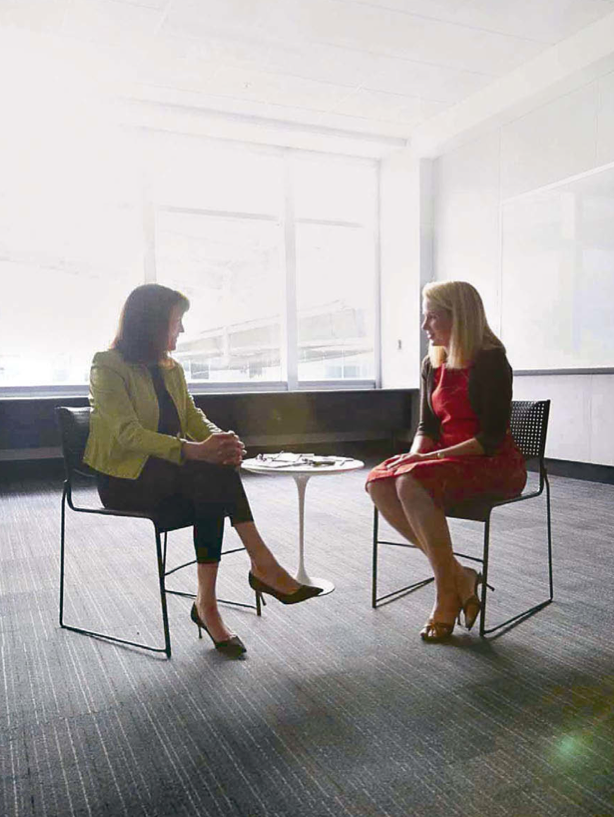
Let’s talk about getting the right people on the bus. Are there values you have that are non-negotiable in your key hires, and if so, what are they?
Someone once said to me, “You don’t suffer fools gladly” (laughs). And in fact the first thing I look for is intelligence. I value raw intelligence over experience. I think sometimes a fresh look at something that isn’t mired in convention actually gets you to a better outcome. I saw things like that in my early days, in my career at Google News, where we just took an approach that no one who’s experienced in the news industry would ever have taken. Here at Yahoo we have a product called Yahoo Gemini, a new form of ad. Again, anyone who had worked for a long time in display or search never would have done it that way. But that was why it was successful, because our people had a fresh view.
Then I like people who are trustworthy and have a sense of integrity. That matters a great deal to me. And I also want people who possess humility, who are able to listen. One of the best lessons I ever learned was from my mentor Eric Schmidt, who said: “Good executives confuse themselves when they convince themselves that they actually do things.” That’s very humbling, because you’ve usually got executives who are failing when they convince themselves that they are doing things. If you watch what good executives really do, they listen, they point in a certain direction. And then their job is to get out of the way so the team can run in that direction.
In 2013 you assembled a “dream team” of hi-tech experts called “Moneyball” to lay the groundwork for Yahoo’s phenomenal growth in digital promotions on smartphones and tablets. And you gave them a brutal deadline to make it happen. Forming this team was surely a very successful fresh approach to fostering a culture of innovation at Yahoo, both with regard to establishing a unique team spirit and at the same time creating a sense of urgency …
Definitely, but we don’t use this model too often. In my time here we’ve done four of what I call “drafts.” A draft is where you say: “Look, this is the highest-priority thing at the moment in the company.” Then you pick the leaders for your team and you say: “Tell us who you need to help.” They can basically draft anyone from the company to come and join. In the case of Moneyball we set a six-week deadline and the overarching question was: “What should native ads look like on Yahoo?” We didn’t know. Would it be something that generated a few million extra dollars of revenue a year, or was it going to be a billion-dollar space for us? It turned out that it was much closer to the latter. Our view was that we didn’t want to spend an inordinate amount of time on this if it wasn’t going to work. So I said: “You’ve got six weeks to build and launch it and then another six weeks to clean up the code and all the operations.” After that, anyone who wanted to stay on the project could stay, and anyone who wanted to go back to their former day jobs could do so. At that point we also promised that if Moneyball – now Yahoo Gemini – ever reached a 100-million dollar revenue rate, that is to say topped US $ 273,000 in a single day, we would send everyone and their families to Hawaii.
And what was the response?
It was amazing. We drafted three leaders and they, in turn, drafted 15 people, so that by the end we had a team of 18 working for those six weeks. They had 42 days to get stream ads launched and they launched them in 39 days. So they actually beat the deadline by three days and we gave them a small spot bonus as a reward. We were having such a great time and it was clear that they were on to something, so they recruited even more people and less than four months later they actually crossed that 100-million dollar revenue mark. Last year 300 million dollars of our revenue came from Yahoo Gemini, so it was just amazing.
“It's amazing to see the company pull together behind direction and strategy.”
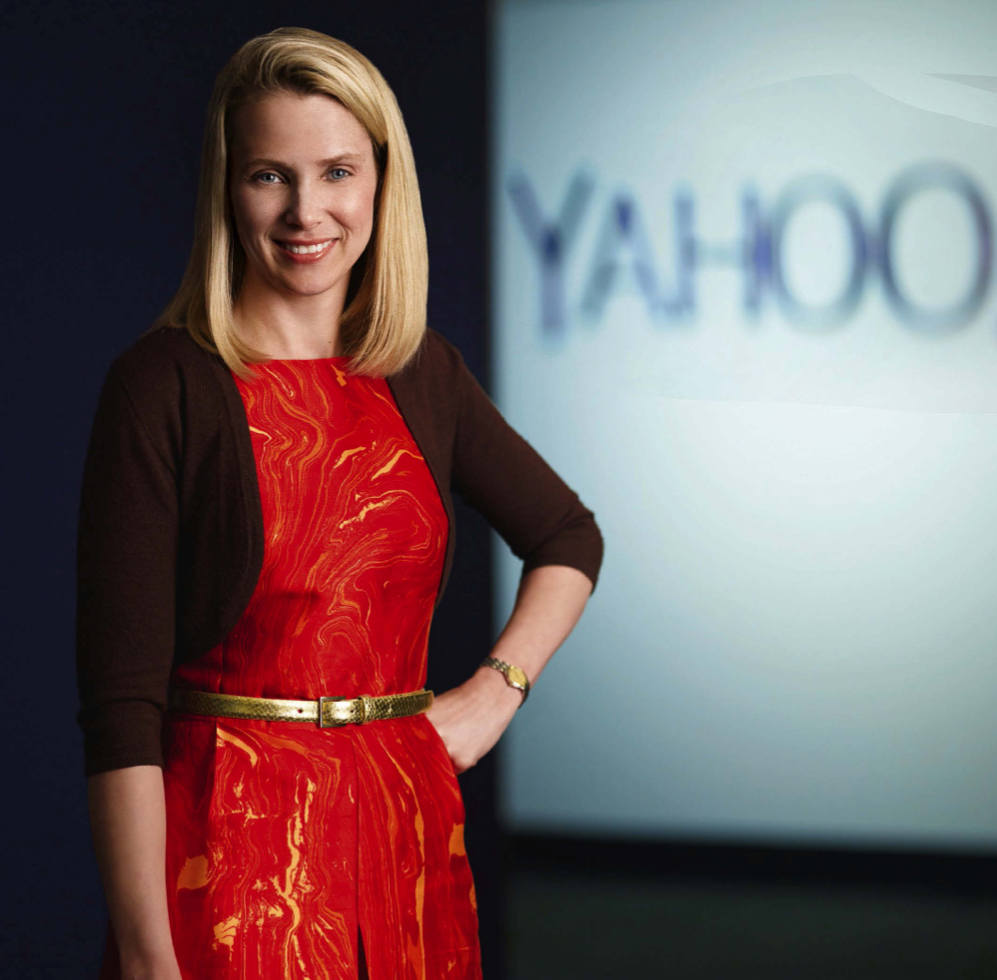
How easy or difficult is it to draft people into a team that has been set such a tight deadline?
You certainly can’t do it all the time. It’s not like a military draft where people are conscripted against their will. My view was that no one could block another person from making the list, but that anyone who did make the list would need to be really involved. And so the leaders were very direct about it: “We want you to come and be part of this. We’re going to ruin your life for the next 90 days. It’s going to be terrible. It’s going to be six, seven days a week, 18-hour days, 20-hour days. But it’s also going to be intense and fun and really fulfilling because if it works, it will be amazing.” And who doesn’t want to sign up for that pitch? Who doesn’t want to be part of something that could be truly transformational for the company?
How would you describe your personal approach to leadership?
I think I’m good with both the small details and seeing the big picture. I tend to telescope in and out so that, for example, if I have a leader I really trust, or I have confidence that a project is really on track, I’m fine with pulling way back and letting the team have a lot of freedom. Whereas if it’s not going well and I feel the team needs my support, then I tend to telescope in much closer and tighter.
Leading through transformation also means overcoming resistance to change – from inside the company and from the outside. What is your recipe for maintaining your personal resilience?
You do need to be strong and have a sense of purpose but there are many times when I have had cause for pause, be it on an acquisition or product direction. And I wonder sometimes whether this is a gender-related trait where, as a woman, I’m more likely to stop and think: “Wait, am I really sure? Do I believe this?” But if the answer is: “Yes, I am really sure, I do believe this,” then I don’t find it difficult to convince others. So I think that makes it easier to overcome the resistance. But more important still is having the necessary periods of introspection to think through decisions and argue with myself. In other words, the conviction comes from deep self-examination.
Is that something you learned or did it come naturally to you?
Let me put it this way: Another great piece of advice I got once was that, as CEO, there are remarkably few decisions that you actually need to make. You can delegate so many decisions each day, although there are always a few crucial decisions that you need to make yourself. In my case, for example, what to do visà-vis Alibaba; whether or not to acquire Tumblr for a billion dollars; how to approach the Microsoft renegotiation for Search … These were all huge decisions where I always benefited from pulling back, thinking them through and arguing the issues from all sides. “What does it look like for them? How will this make sense – either to them or to us?” It’s about thinking through all the different stakeholder arguments and coming up with what I think is a principled view.
In sum, then, since you took the helm Yahoo has mastered immense internal change while presenting a stable face to the world. Is that a fair summary?
From the outside things might have looked very stable, but yes, inside there have been huge paradigm shifts in terms of where we decided to put our energy and how we decided to assign our resources. That is what has really set us up to grow and to have a future, because even three years ago our product line didn’t suggest that. So as a company we should be very proud of this.
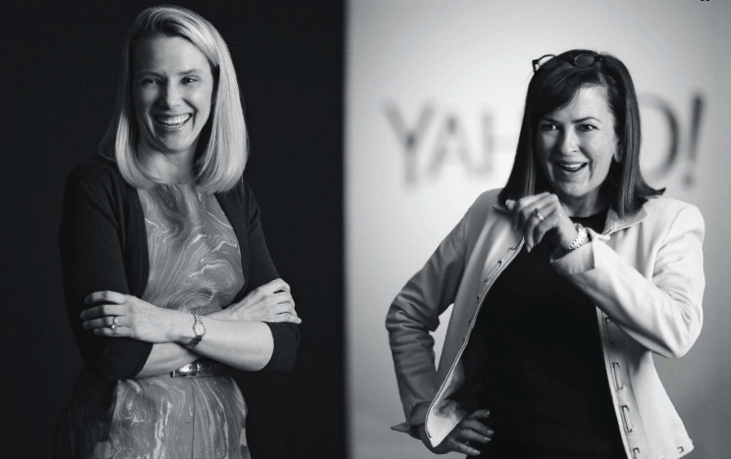
The interview with Marissa Mayer in Sunnyvale was conducted by Martha Josephson, Egon Zehnder, Palo Alto.
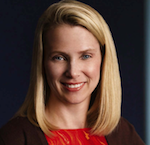
Marissa Mayer
was born in Wausau, Wisconsin on May 30, 1975 to an art teacher mother of Finnish descent, and an environmental engineer father. An accomplished dancer, debater, and science student at high school, Mayer went on to study Symbolic Systems at Stanford University, building computer software for her undergraduate thesis. Known for only requiring four hours sleep a night, she turned down 14 other job offers to join Google in 1999, where she later built the design teams for the now indispensable Google products. Mayer was 37 years old and pregnant when she was appointed CEO of Yahoo in 2012. She was the youngest woman to ever lead a Fortune 500 company. At 40, Mayer still runs half marathons with her husband Zachary Bogue, a lawyer and venture capitalist whom she married in 2009. The couple has a three-year-old son, Macallister.
Yahoo
Yahoo was founded in January 1994 by two Stanford electrical engineering classmates who dubbed their brainchild “Jerry and David’s Guide to the World Wide Web.” After its incorporation in 1995 it was humorously re-branded as Yahoo! – a specially designed acronym for “Yet Another Hierarchical Officious Oracle.” In the days before search engines, Yahoo was principally a directory of websites designed to help navigate the rising crest of the first Internet boom. Today, Yahoo is one the technological giants of the hyper-connected world with over one billion users, and more than 600 million of them on mobile, in over forty-five languages. Since 2012 Marissa Mayer has presided over a more than tripling of Yahoo’s share price, thanks partly to the 2014 floating of Chinese e-commerce company Alibaba, in which Yahoo held a more than 40 percent stake. Yahoo’s transformation is well underway, with a dramatically expanding suite of mobile products across search, communications, and digital content, and healthy revenue streams in its growth businesses. Marissa Mayer is well on the way to transforming Yahoo into a mobile-friendly global technology company with an unequivocal vision.
PHOTOS: JÜRGEN FRANK






